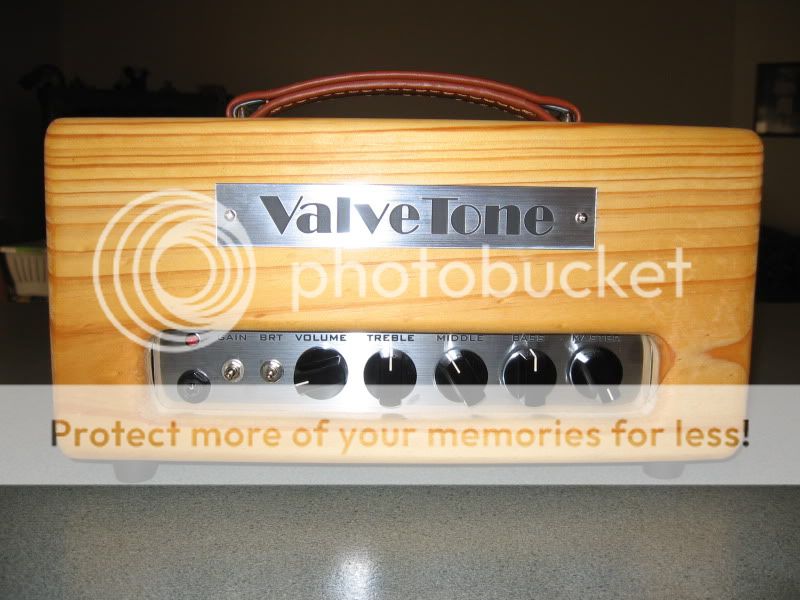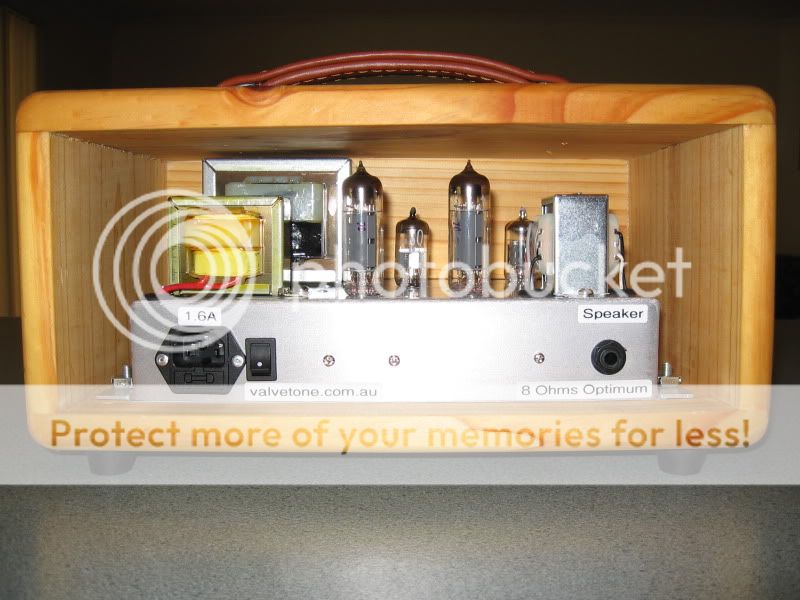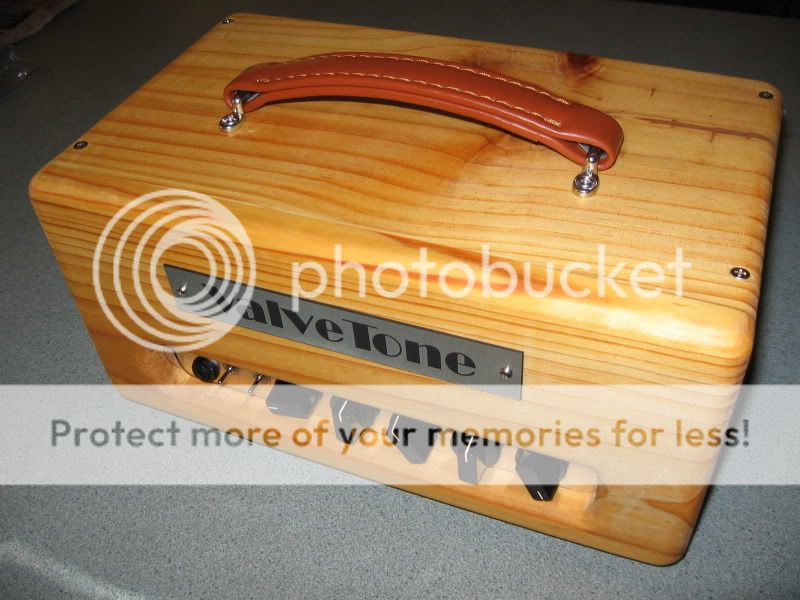Power was applied to the amplifier, and there were no pyrotechnics, so time for a few voltage measurements and calculations.
First the voltage quadrupler: The theoretical output was calculated to be 314VDC. When the amplifier was first switched on, with cold valves, the B+ was 333VDC. Once the valves had warmed up, the B+ dropped to 323VDC, which is quite close to the value calculated earlier. At maximum sinewave output, the B+ was 318VDC, at maximum squarewave output, B+ was 315VDC. This demonstrates that a voltage quadrupler with suitably rated components can easily supply the B+ power requirements of a valve amplifier.
The screen supply in this amplifier has been designed to have significant "sag", to protect the screens, and to provide some compression as the amplifier is overdriven. The zero-signal screen voltage was 310VDC. At maximum sinewave output it had fallen to 283VDC, while at maximum squarewave output it was 246VDC.
The zero-signal cathode voltage was 12VDC, so the cathode current was 12 ÷ 180 = .067 Amps
The voltage drop from cathode to anode was 323 - 12 = 311
The total plate dissipation ( ignoring the minor screen dissipation ) was 311 x .067 = 20.8 watts, or 10.4 watts per valve.
Using a 400Hz sinewave and an 8-ohm load, output voltage at the onset of clipping was 11.4VAC. This equates to an output power of (11.4 x 11.4) ÷ 8 = 16 watts.
The output transformer only has a single 8-ohm secondary, but output power was also calculated for 4 and 16 ohms, despite the nominal mismatch. The amplifier delivered 13.5 watts at 4 ohms, and 12 watts at 16 ohms.
The completed chassis has now been fitted to a very basic timber headshell.



